|
The
|
THE BURGENLAND BUNCH NEWS - No. 307 March 31, 2020, © 2020 by The Burgenland Bunch All rights reserved. Permission to copy excerpts granted if credit is provided. Editor: Thomas Steichen (email: tj.steichen@comcast.net) BB Home Page: the-burgenland-bunch.org BB Newsletter Archives: BB Newsletter BB Facebook Page: TheBurgenlandBunchOFFICIAL Our 24th year. The Burgenland Bunch Newsletter is issued monthly online. The BB was founded in 1997 by Gerald Berghold, who died in August 2008. |
| Current Status Of The BB: * Members: 2929 * Surname Entries: 8934 * Query Board Entries: 5793 * Staff Members: 13 |
|
1) THE PRESIDENT'S CORNER (by Tom Steichen)  I'm
calling this newsletter "the virus edition" ...but seriously hope that the next one can be virus free.
Regardless, please stay safe! I'm
calling this newsletter "the virus edition" ...but seriously hope that the next one can be virus free.
Regardless, please stay safe!As for this month's collection of bits and pieces (Article 1), it begins with a couple of non-virus follow-up notes, one on the matriken.at site, the other on the survey I hope you have participated in (if you need something to do from your self-imposed quarantine, its a useful way to spend a few minutes!). The next bit is a follow-up on the corona virus in Burgenland (and yes, they now have cases). We close with our regular tidbit features, the monthly BB Facebook report, book sales, (no) recipe and a cartoon. March 31 Updates: BB staffer Patrick Kovacs was kind enough to provide a couple of updates concerning the 'shelter-in-place' and 'quarantine' situation in Burgenland. I'll insert those in the Coronavirus in Burgenland? tidbit below... but let me thank him here. I'll also take the opportunity to give extra thanks to Vanessa Sandhu for providing this month's The Facebook Bunch report. Yes, Vanessa is the normal author of that tidbit... but she is also a nurse, currently taking on extraordinary risk to continue providing care to patients in the Lehigh Valley. Further, her husband is involved with the medical response in the Valley too, which adds extra stress to her days. Given that, I tried to let her 'off the hook' for this month's report, but she hammered one out anyway! Thanks Vanessa! Oh, and for kicks I'll throw in Bob Strauch's response when I asked (even though I expected a 'none' answer) whether there were any Ethnic Events to report: "Only trips to the grocery store, drug store, dollar store and gas station, bless them. A taste of 1918." Article 2 is about the 1918 Spanish Flu and its impact on Burgenland. Known as the Spanische Grippe in the German language, surprisingly it was only a distant third place among health concerns in Burgenland at that time. While I debated publishing this article versus another one, I decided I should get it done before we are truly sick of any virus-related information (I'm close already!). The remaining articles are our standard sections: Historical Newsletter Articles, (no) Ethnic Events and Emigrant Obituaries.  Online
Burgenland Catholic Church Books: Again, nothing particularly significant has changed within the current beta
online implementation of the Matriken (register books) of the Catholic Diocese of Eisenstadt this month ...other than
a notice now appears at the top of the initial page announcing the payment options that are going into effect
on April 1. Online
Burgenland Catholic Church Books: Again, nothing particularly significant has changed within the current beta
online implementation of the Matriken (register books) of the Catholic Diocese of Eisenstadt this month ...other than
a notice now appears at the top of the initial page announcing the payment options that are going into effect
on April 1. The pay options are as predicted: 10 EUR for 15 days, 20 EUR for 3 months and 50 EUR for 1 year. No statement was made concerning how many images can be downloaded at each pay level. As of this writing (March 16), the count of available parishes online remains at 63 [of the intended 172 parishes]; given the coronavirus, I would not expect that count to change soon. This last statement (only 63 parishes online) is of particular importance as the Terms and Conditions state that "There is no right of cancellation after paying the usage fee." This means you should review the list of available parishes (found here: https://matriken.at/node/24) to be sure your parish's data is available before paying the fee!  Survey
Participants Still Wanted (a follow-up on last month's comment): Patricia Nemetz-Mills, a professor of
Strategic and Operations Management at Eastern Washington University (and a BB member), is on sabbatical as a
visiting scholar at Vienna University. As part of her role in Vienna, she is working on a study of Culture,
Nostalgia, and Immigration that is focused on both Burgenländers and immigrants from Burgenland. She is interested in
having BB members, whether emigrants from Burgenland or descendants of emigrants, participate anonymously in her study by
filling out an online survey. Survey
Participants Still Wanted (a follow-up on last month's comment): Patricia Nemetz-Mills, a professor of
Strategic and Operations Management at Eastern Washington University (and a BB member), is on sabbatical as a
visiting scholar at Vienna University. As part of her role in Vienna, she is working on a study of Culture,
Nostalgia, and Immigration that is focused on both Burgenländers and immigrants from Burgenland. She is interested in
having BB members, whether emigrants from Burgenland or descendants of emigrants, participate anonymously in her study by
filling out an online survey.The survey is relatively short (it should take maybe 10 minutes at most) and asks mostly for opinions and feelings about some picture sets. There are also a few general demographic questions (but none are intrusive).  The survey is available via the
online "SurveyMonkey" platform and is located for English-speakers here: The survey is available via the
online "SurveyMonkey" platform and is located for English-speakers here: https://www.surveymonkey.com/r/8526CCN. For German-speakers residing in Burgenland and nearby locations (für Deutschsprachige mit Wohnsitz im Burgenland und in der Nähe) the German-language survey is here: https://www.surveymonkey.com/r/ZPZ668N. As of March 5th, shortly after the survey went online and was announced here and on Facebook, Patricia reported that 102 people had filled out the English / US questionnaire and 13 people had filled out the German / European questionnaire. Her target (for reliable interpretation) is 200-400 participants via the US questionnaire and at least 100 via the European questionnaire. As I said last month, I have reviewed her study and believe it is well worth supporting. Thus I again ask that you consider going to the link above and thoughtfully fill out the questionnaire. This is especially true if you are a European-born reader, as participation there is well below what is needed for minimal reliability.  Coronavirus
in Burgenland? Unfortunately, yes. As of March 30th, the Burgenland government coronavirus website (burgenland.at/themen/coronavirus)
reports 179 confirmed cases and three deaths. There are 701 people currently in official quarantine, with 12 hospitalized,
including three in intensive care. Oberwart is the hardest hit district, with 59 confirmed cases. One bit of good news is
that ten individuals, including the first four confirmed cases in Burgenland (in a single family), have recovered and are
healthy again. Coronavirus
in Burgenland? Unfortunately, yes. As of March 30th, the Burgenland government coronavirus website (burgenland.at/themen/coronavirus)
reports 179 confirmed cases and three deaths. There are 701 people currently in official quarantine, with 12 hospitalized,
including three in intensive care. Oberwart is the hardest hit district, with 59 confirmed cases. One bit of good news is
that ten individuals, including the first four confirmed cases in Burgenland (in a single family), have recovered and are
healthy again. However, Hungary declared on the 26th that all Hungarians must go into a 14-day self-quarantine, which means numerous Hungarian health care workers who work in Burgenland can no longer do so, thus creating a new crisis. [Update 3/31: Patrick Kovacs gave me a head's up that this new crisis has been mostly resolved, as critical workers "who live or work within 50 kilometers of the border do not need to go into 14-day quarantine after entering Hungary - provided there is no suspicion of Covid-19 disease." I say "mostly resolved" because this is currently only an informal agreement between the countries... Burgenland's Governor Doskozil wants to see this placed into writing to guarantee cross-border access by medical and nursing professionals. State Councilor Christian Illedits called "in a letter to all operators of old people's homes and nursing homes, to encourage nurses to stay in Austria."] Interestingly, the Austrian national site indicates that there is a 52/48 split, male versus female in percent, among their 9,541 confirmed cases (one cannot, however, tell if this split is due to an exposure difference, a susceptibility difference, or both). That ratio was initially skewed much more toward men but has slowly slid toward neutrality as cases have accumulated. The national site also reports that about 90% of their confirmed cases are experiencing only mild symptoms (i.e., are not hospitalized); but over 19% of the hospitalized cases are in intensive care. Austria also publishes data on confirmed cases split by age group. Here is their March 30th chart: 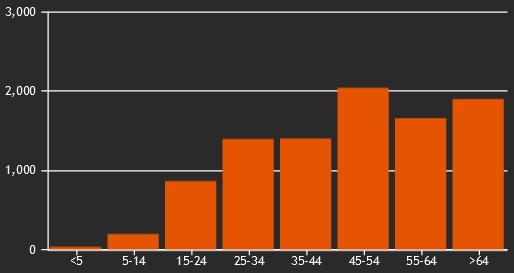 What is noticeable are both ends of the graph: cases among the young (<15) are quite rare and the oldest, open-ended group, >64, is showing no extraordinary risk (if anything, its risk is lower than the 25-64 ages). Again, one cannot tell if these results are due to an exposure difference, a susceptibility difference, or both. The sparse international data also seems to suggest a slightly higher proportion of cases among men than women; however, the more important issue appears to be a even higher death rate among male cases than female cases, with at least 60% of all deaths being male. Like here, the government is still advising, "Stay at home! Avoid trips that are not absolutely necessary!" Events remain completely prohibited. Restaurants are completely closed. Sports fields, playgrounds and other public places of encounter are closed. All these restrictions are to remain in effect until at least April 13th. The website says there only - Professional work that cannot be postponed - Urgent errands (groceries) - To help other people - For exercise, but only alone or with members of your household (per Patrick Kovacs) It also notes that border entry requirements into Austria were tightened further, essentially prohibiting any entry unless the person immediately goes into home quarantine for two weeks or has a current clean health certificate. 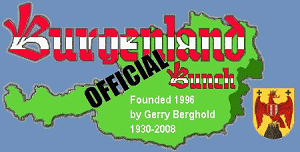 The
Facebook Bunch (from Vanessa Sandhu): The
Facebook Bunch (from Vanessa Sandhu):Greetings Burgenland Bunch! I hope this newsletter finds you safe and healthy! In spite of the pandemic, our group added 38 new members, bringing our total Facebook group membership to 1256 members. Lots of translations and record lookups are occurring, but I have noticed an increase in traditional Burgenland recipe sharing as everyone is hunkered down for the foreseeable future. We've been talking about strudels, Topfen Schnitten, Topfennudeln, and homemade plum schnapps. If you haven't joined us, please do! facebook.com/groups/TheBurgenlandBunchOFFICIAL I am very happy to announce that member Ingrid Schuster's Burgenland Bunch Ancestor Project has gone live! Thank you all for adding your kits! If you haven't joined but would like to, the process is pretty easy. Once your raw DNA data has been uploaded to GEDmatch and has been assigned a kit number, look for the link to Ancestor Projects. It is under the DNA Applications header. Look for The Burgenland Bunch, then request membership. As of this moment, there are 99 kits enrolled. Check it out and find some new cousins! Kudos to Ingrid for getting this project off the ground! MyHeritage in Color is free and unlimited for one month! If you've ever wanted to colorize your old family photos, now is the time! Free online access to the Diocese of Eisenstadt records ends on April 1, 2020. There's still a bit of time to get some research done before the fee is imposed for access. Member Fred Knarr shared a great song by Die Edlseer. You can enjoy it here: m.youtube.com/watch?feature=youtu.be&v=y7P7WIvb7MM I'm sorry for the brevity of this update, as there is lots more to see in our group. We are a medical household and things have been very hectic here since the Coronavirus outbreak began. I hope that this all passes soon so we can get back to our normal lives. I am praying for the health and safety of each and every one of you and your families! Be well and take care! Vanessa  Update
for book "The Burgenländer Emigration to America": Here is this month's update on purchases of the English issue of
the 3rd edition of Dr. Walter Dujmovits' book "Die Amerika-Wanderung Der Burgenländer." Update
for book "The Burgenländer Emigration to America": Here is this month's update on purchases of the English issue of
the 3rd edition of Dr. Walter Dujmovits' book "Die Amerika-Wanderung Der Burgenländer."Current total sales are 1501 copies, as interested people purchased 2 more books during this past month. While I'm thrilled to see the count exceed 1,500, the monthly increase is the lowest I can recall. As always, the book remains available for online purchase at a list price of $7.41 (which is the production charge for the book, as we purposely choose not to make a profit so we can avoid dealing with the income tax consequences and so you can obtain the book at as low a cost as possible!), plus tax & shipping. See the BB homepage for a link to the information / ordering page and for information about current discounts (there is at least one discount on price or shipping available most of the time... if not, wait a few days and there will be one!). Getting the book and reading it is another excellent way to pass the time in self-imposed quarantine. Burgenland Recipes: No recipe available for posting (can't blame the virus, though!); please consider sharing one of yours!  Note:
We have updated the recipes sortable list with links directly to the recipes or food-related
articles published in our past newsletters. You can access the list by clicking our recipe box (to the right). Thanks to the
contributions of our members over the years, we have quite a collection of Burgenland recipes, some with several variations. Note:
We have updated the recipes sortable list with links directly to the recipes or food-related
articles published in our past newsletters. You can access the list by clicking our recipe box (to the right). Thanks to the
contributions of our members over the years, we have quite a collection of Burgenland recipes, some with several variations.However, we have now used up our unpublished recipes... thus this recipe section will become dormant until we receive more. So, if you have a favorite family recipe, please consider sharing it with us. We will be happy to publish it. Our older relatives, sadly, aren't with us forever, so don't allow your favorite ethnic dish to be lost to future generations. You can send your recipe to BB Recipes Editor, Alan Varga. Thanks! Cartoon of the Month: It seemed better to joke about a different virus this month... but I also felt I had to pass on from Bob Strauch the fact that the authorities had to step in on a case of hoarding in the Lehigh Valley (see image to right below). Despite the hardships caused by the coronavirus, please do not deprive your fellow BB's by buying too many! 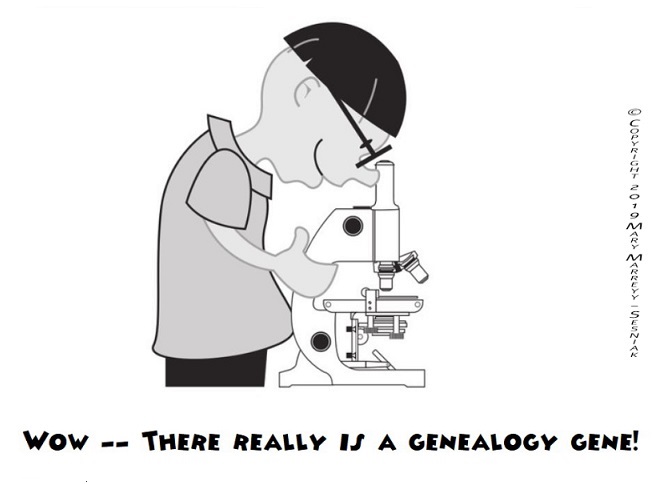
 |
2) 1918 SPANISCHE GRIPPE IN BURGENLAND Given the current novel coronavirus, COVID-19, I became curious about how the Spanish Flu (= Spanische Grippe, in German) of 1918 affected Burgenland. 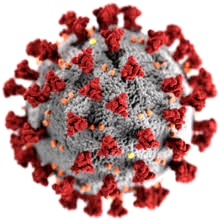 Before
I do that, let me note that the Spanish Flu and COVID-19 are very different diseases. The use of the term
"novel" in novel coronavirus indicates that this is the first time that this specific coronavirus
disease, COVID-19, has ever been recorded. Further, the term "corona" is a reference to the crown-like
protuberances on its surface. As such, it is most like the 2003 SARS corona virus (designated SARS-CoV).
SARS affected 26 countries and resulted in more than 8000 cases. Given the similarity, the COVID-19 virus has
also been designated as SARS-CoV-2 by the US National Institutes of Health and other research organizations. Before
I do that, let me note that the Spanish Flu and COVID-19 are very different diseases. The use of the term
"novel" in novel coronavirus indicates that this is the first time that this specific coronavirus
disease, COVID-19, has ever been recorded. Further, the term "corona" is a reference to the crown-like
protuberances on its surface. As such, it is most like the 2003 SARS corona virus (designated SARS-CoV).
SARS affected 26 countries and resulted in more than 8000 cases. Given the similarity, the COVID-19 virus has
also been designated as SARS-CoV-2 by the US National Institutes of Health and other research organizations.
|
3) HISTORICAL BB NEWSLETTER ARTICLES Editor: This is part of our series designed to recycle interesting articles from the BB Newsletters of past years. I again go back twenty years, to when Gerry wrote about the term "Heanzen." Please note that Gerry provides (in the first two paragraphs of his reply) an interpretation/explanation of where the term comes from; other authors in this newsletter have argued that this is an incorrect interpretation and have provided alternative explanations. My purpose in reprinting this article is neither to defend nor decry his interpretation (however, I do question the source for one statement in it), rather, I found the rest of his discussion interesting and useful and wanted to share that again. THE BURGENLAND BUNCH NEWS - No. 76A March 15, 2000 HEANZEN - A QUESTION OF IDENTITY (Hank Dilcher & G. Berghold) (Ed. [Gerry] Note: member Hank Dilcher and a relative are planning a trip to the Burgenland. As a result they are doing the homework that all prospective travelers should do. It will pay big dividends and make their trip much more enjoyable. However, a question of Burgenland identity arose.) Hank writes: Received the attached from a German relative of mine in Nova Scotia (who may join us in our October Burgenland trip). Does this make sense? The relative writes: Just yesterday, I learned something new when I looked up "Burgenland" in my medium-sized German encyclopedia. The German-speaking population there (which makes up about 85% of the Burgenland population, the rest being Hungarians, Slovaks and Slovenes) is considered to be ethnically and culturally different from the "proper" Austrians. In fact, they are called "Heinzen" (alternatively spelled Hienzen or Heanzen), and came to the area in the 11th-13th centuries from Bavaria. This was confirmed by the large German encyclopedia, which I just checked in our university library, while the English-language encyclopedias (Britannica, Americana) made no mention of the name of this population in their articles on the Burgenland. The German encyclopedia article on the "Heinzen" gave as a reference (among some German-language scholarly articles) the book "Borderland" by A. F. Burghardt (Madison, 1962). This book is in none of the Nova Scotia university libraries and, anyway, I wouldn't have the time now to read it if I got it through interlibrary loan. But perhaps you can find it somewhere locally; in May I'll look for it when I'm in Urbana again (I'll have a few days there after a conference). Gerry's reply to "does this make sense?" Hank, Not quite - "Heinzen," or "Hianzen" as it is now known, is a dynastic term which originated from one Wolfer and his brother Hedrich, sons of Count Volvern of Wiltonia or Honnsburg (Styria - not Bavaria - although parts of Styria at one time belonged to the Dukes of Bavaria), who came to the Güssing area in 1142 AD and built the first (wooden) castle of Güssing. They brought forty German-speaking "reiters" or armed followers with them (from Gesta Hungarorum - First History of Hungary, dtd. 1282 AD). This was the first documented "German" presence in Burgenland, if you ignore Charlemagne's Frankish campaigns against the Avars in the 8th Century or tribal wanderings during the even earlier Roman period.
From Wolfer and followers descended the mighty Counts of Güssing (their line lasted for over 200 years until the
Herrschaft was taken over by the Hungarian crown). One of the most well-known Counts of Güssing was "Schwarzen
Heinz" (Black Henry), who had the title 1254-74 and was almost an independent monarch. He brought and invited
many other German-speaking colonists to the region. For some reason the name Heinzen = followers of Heinz
stuck over the centuries, even though other aristocratic families ruled the area for even longer periods (Batthyány from
1524-1918 for instance, wouldn't Batthyania have a nice ring to it?).
I imagine the best you can say is that a "proper" anything is something that has adhered to an original definition. I'd
not want to try to write the definition of an Austrian, other than to say the term refers (today), to a person born
(or naturalized) in Austria. |
4) ETHNIC EVENTS (none! ...blame the virus!) LEHIGH VALLEY, PA (none) NEW BRITAIN, CT (none) ST. LOUIS, MO (none) UPPER MIDWEST (none) |
5) BURGENLAND EMIGRANT OBITUARIES Lorenz Biricz  January 4, 1925 – February 24, 2020 January 4, 1925 – February 24, 2020It is with great sadness we announce the passing of Lorenz Biricz. Lorenz leaves Irene, his beloved wife of 61 years, his loved children Diana (Stephen Grand) and Larry (Isobel), his adored grandchildren Ashley (Ted Currie), Matthew (Samantha), Tommy, Karley, Charlotte, Lauren and great granddaughter Charley. Lorenz was predeceased by sister Johana, leaves brother Matthias and sisters Mary and Eva. Lorenz, an admirable Renaissance man, led an adventurous and enriching life. Born in Kroatisch Minihof, Austria, he was conscripted into World War II and joined Messerschmitt. After the war, Lorenz apprenticed with his uncle in Munich, where he mastered the skills of cabinet making and fine furniture restoration. Seizing opportunity, he immigrated to Toronto in 1952. One of the first things he did was sign up for English lessons at Holy Rosary Church. It turned out to be the best $5 he ever spent; there he met a German immigrant and the love of his life, Irene. Together they opened Lorenz Antiques Ltd. on Mt Pleasant Road and what became one of Toronto’s premier antiques establishment. In 1967, Canada and Lorenz shared a growing love of antiques and fine art. That year the Canadian Antiques Dealer Association was established with Lorenz a proud founding member, who remained on its board for many years. Lorenz was known for his skill, extensive knowledge, appreciation of technical detail and keen willingness to share his knowledge with others. He was proud to serve Canada as a member of the Canadian Cultural Property Export Review Board. He and its members sought to preserve our cultural heritage through the use of export controls, tax incentives and grants to retain the best examples of our material culture and heritage within Canada. Throughout his life Lorenz carried himself with genuine warmth and grace, treating all with respect and caring. Lorenz’s passion for antiques was equalled only by his love for family. Lorenz was a proud Opa. Whether a school concert or an event, he wouldn’t miss the chance to watch his children and grandchildren. Lorenz would be found beaming with pride over their accomplishments. The family thanks Delmanor (Wynford) and Dr. J. Arvinitis, of the Temmy Latner Centre for Palliative Care, for their kindness and skill, Dr. B. Topp and Mosaic and Circle of Care for their round-the-clock compassion and support. A visitation is scheduled Tuesday March 3rd, 4-6 pm at Morely Bedford Funeral home, 159 Eglinton Ave W, Toronto. In lieu of flowers, we request donations to the Temmy Latner Centre (.tlcpc.org), Canadian National Institute for the Blind (.CNIB.ca) or charity of your choice. John Skrapits  John "Jive" Skrapits of Northampton
passed away peacefully at St. Luke's Hospital in Bethlehem on March 26, 2020. He was the loving husband of Anna (Skrapits)
Skrapits for 63 years. Named János at birth on December 21, 1929, in Szentpéterfa (Petrovo Selo/Prostrum) Hungary, he was
the son of the late Vince and Johanna (Paukovits) Skrapits. John "Jive" Skrapits of Northampton
passed away peacefully at St. Luke's Hospital in Bethlehem on March 26, 2020. He was the loving husband of Anna (Skrapits)
Skrapits for 63 years. Named János at birth on December 21, 1929, in Szentpéterfa (Petrovo Selo/Prostrum) Hungary, he was
the son of the late Vince and Johanna (Paukovits) Skrapits.Rather than serving in Communist Hungary's military, he escaped into Austria in 1951 but was captured by Soviet occupation forces and turned over to Hungarian authorities. He was sentenced to 3 years of hard labor in a coal mine in Oroszlány for illegal border crossing and became the most productive out of thousands. After marrying Anna in May 1956, and with the failure of the Hungarian Revolution, John and his wife decided to leave the village of their birth and crossed the border into Austria as refugees in November 1956. They arrived at Camp Kilmer in New Jersey through Operation Safe Haven in February 1957 and soon settled in Northampton to be near other family members. John made the most of the opportunities given to him in this country and lived the American Dream. He founded Northampton Concrete Form and Skrapits Concrete Company with his three brothers-in-law, which provided a very comfortable life for his family. John was the ultimate storyteller; he especially enjoyed telling others of his time playing the Button box accordion in a band and often played at Hungarian gatherings in Northampton. He was proud of his heritage and his Croatian roots in Hungary, and he passed that onto his children. In addition to being a long-time Dallas Cowboys fan, he loved animals, sweets and spending time with his family, especially his grandchildren. He was a member of Queenship of Mary Church and St. Peter and Paul Society, both in Northampton. Survivors: Wife; son John M., son Andrew and his wife Kathleen (Kachmar), and daughter Juliann; and four grandchildren, Kristen, Brian, Bethany, and Chloe. He is also survived by his sisters, Maria Szoldatits in Canada and Rosa Kulcsar in Hungary. He was predeceased by his parents, brother Rudi, sisters, Hana and Paula, all in Hungary. Services: A private burial service will be held this week, and a Memorial Mass will be announced at a later date. Arrangements are under the direction of the Reichel Funeral Home, Northampton. Online condolences may be offered at www.reichelfuneralhome.com. In lieu of flowers, any donations can be made to Queenship of Mary Church. Published in Morning Call on Mar. 29, 2020 |
| END OF NEWSLETTER (Even good things must end!) |
|
Burgenland Bunch Newsletter, copyright © 2020 by The Burgenland Bunch |
 News
News The
Spanish Flu was not a coronavirus; rather it was a fairly common H1N1 orthomyxovirus with
genes of avian origin. As such it was similar to the 2009 Swine Flu virus, which was an H1N1 with genes of pig
origin. H1N1 viruses have spike-like protuberances on their surface, with the spikes being the glycoproteins Haemagglutinin
and Neuraminidase that give them their name.
The
Spanish Flu was not a coronavirus; rather it was a fairly common H1N1 orthomyxovirus with
genes of avian origin. As such it was similar to the 2009 Swine Flu virus, which was an H1N1 with genes of pig
origin. H1N1 viruses have spike-like protuberances on their surface, with the spikes being the glycoproteins Haemagglutinin
and Neuraminidase that give them their name.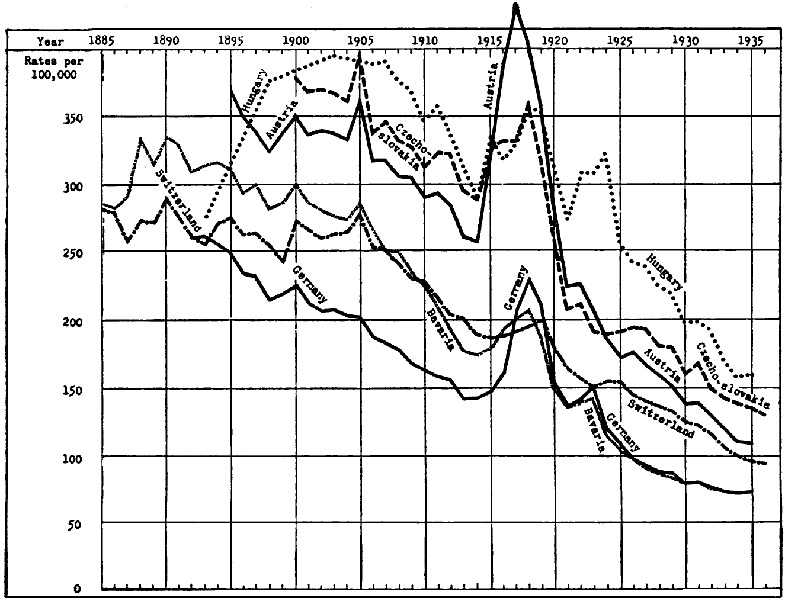

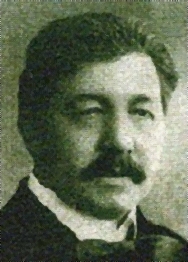 here
are even some poets writing in the dialect. Chief among them was Josef Reichl, (1860-1924), born in Güssing. In a previous
newsletter, we printed his poem "Mei Hoamat" (= Meine Heimat = My Home - although "home" does not
connote the strong ties associated with the word "Heimat"). Like most of his poems, it was written in Hianzisch.
There is a Hianzen Society in Güssing, in which member Heinz Koller and wife are very active. I have a book of
Hianzisch poems by Mathilde Pani of Gerersdorf bei Güssing published in 1995. There are other poets. There is also a
Josef Reichl-Bundes (club).
here
are even some poets writing in the dialect. Chief among them was Josef Reichl, (1860-1924), born in Güssing. In a previous
newsletter, we printed his poem "Mei Hoamat" (= Meine Heimat = My Home - although "home" does not
connote the strong ties associated with the word "Heimat"). Like most of his poems, it was written in Hianzisch.
There is a Hianzen Society in Güssing, in which member Heinz Koller and wife are very active. I have a book of
Hianzisch poems by Mathilde Pani of Gerersdorf bei Güssing published in 1995. There are other poets. There is also a
Josef Reichl-Bundes (club).